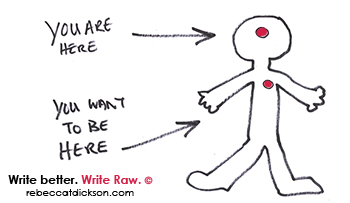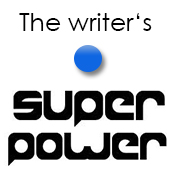“Show. Don’t tell.”
The key to truly great writing is in fleshing out details. Writers are told pretty regularly to support and elaborate. Our mantra: “Show. Don’t tell.”
But what does that mean?
How do we writers help readers see the action? Feel the characters’ emotions? How do we stop skim-the-surface storytelling and put our readers right down in it? For starters, we have to slow the freak down. Waaaaaaay down. We need to imagine a full, complete picture of every scene in our minds’ eye.
But it goes further than that.
Writers need to learn the kinds of details that effectively “show.” The stuff that helps readers see the wisp of blond hair curling toward her chin when her gaze falls to the ground. Feel the chill of a morbidly gray morning in November while hunting pheasant. Or suffer the metallic taste of irony when she first learns her lover is cheating with her sister.
It’s our job to give readers a reason to care about our characters and what happens to them. Here’s a handful of the kinds of details that help a writer “show.”
– Character details (moving, thinking, feeling, talking), moment by moment description of action, get inside your characters’ heads, inner thoughts, opposing perspectives.
– Setting details (smell, touch, taste, hear, see), create a living, breathing picture.
– Important object details (color, size, texture, temperature), compare objects to something everyone is familiar with.
– Non-narrative details (quotes, statistics, facts, anecdotes, definitions)
Books have an advantage over movies or television because they let readers inside characters’ heads. Beginning writers often forget this. But it’s critical to reveal characters’ inner thoughts and feelings. To show different perspectives by getting inside the minds of people from different times, places and backgrounds. Good writers will also reveal characters’ personalities, thoughts and feelings through dialogue.
When you’re adding these kinds of details, try not to get caught up in editing or critiquing. This part of the writing process – the fleshing out of stories – is about using YOUR power and magic. But it can be a frustrating time, too, pausing frequently to compare the scene in your head with what’s on the page. It’s hard work to adequately convey what your mind has constructed so clearly.
How hard you push yourself during this step is the difference between mediocre writing and excellence. Put another way, slowing down and adding details is the difference between editorializing and writing rich.
A crude example: Walk into a class of third-graders and write on the board, “I have a dog.” Then tell the students to draw a picture of a dog. Each picture would be completely different. And likely vastly different from the dog you imagine in your head. The solution lies in the details.
Example number two: “Yesterday, my husband brought me home some cookies. They tasted good.” Forget that these sentences are boring and poorly constructed. Just think about what you would ask in order to learn more. Why did he bring me cookies? What kind were they? Did they have frosting? Did he make them? Did I share?
Once writers know how to ask the right questions – and that it is, in fact, okay to ask those questions – they become more adept at deleting the irrelevant to make way for the specific and concrete.
• • •
Details help to create a picture in the mind of a reader. But how you go about adding them can make a huge difference – the difference between smelling the chlorine by the pool and feeling your head submerge in the icy water.
Don’t: When I started out, I had a bad habit of cramming every detail of a character in the first paragraph. “The short, fat, pasty-faced woman with a wide-brim straw hat, dressed in her best white Sunday skirt, had dirty, black fingernails and a grin that revealed yellow teeth.” It overwhelms the reader.
Do: Use descriptions of others to reveal something about the main character. “His thick black hair reminded me of my own, when I was pregnant with my oldest. Back before the cancer treatment left me with a threadbare scalp.”
Do: Bring description at unexpected moments. “The sky was metallic and grainy that night, as though sheaths of rain could come down any second. As she reached for the shutters, I could see where years of self-cutting scarred her forearms like some sort of bold tattoo.”
Do: Show details during conversation. “I left him,” she said, crossing her thin arms defiantly, wrinkling the fine lace and white satin of her wedding gown. “Don’t try to talk me into going back.”
Do: Add a bit of character detail when describing something important. “She had a nasty habit of biting her full, pink lips when she was uncertain, which happened frequently when he was around. He noticed – and he liked it.”
Do: Add detail while another character’s action is being described. “She watched him moving to the dance floor with envy. He was so graceful on his feet, while she tripped merely walking across the ballroom in her stilettos.”
How do you add detail to your work?


